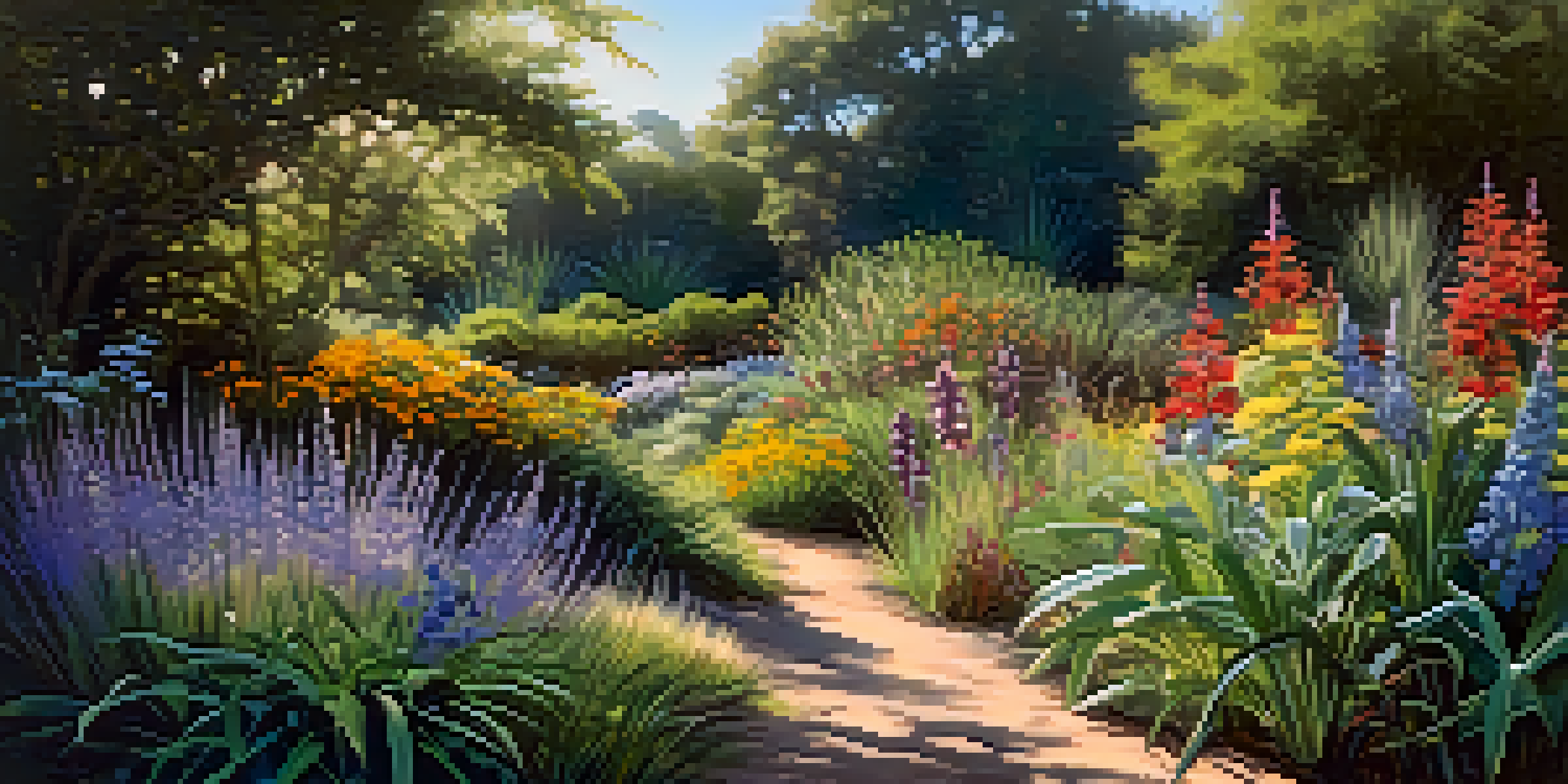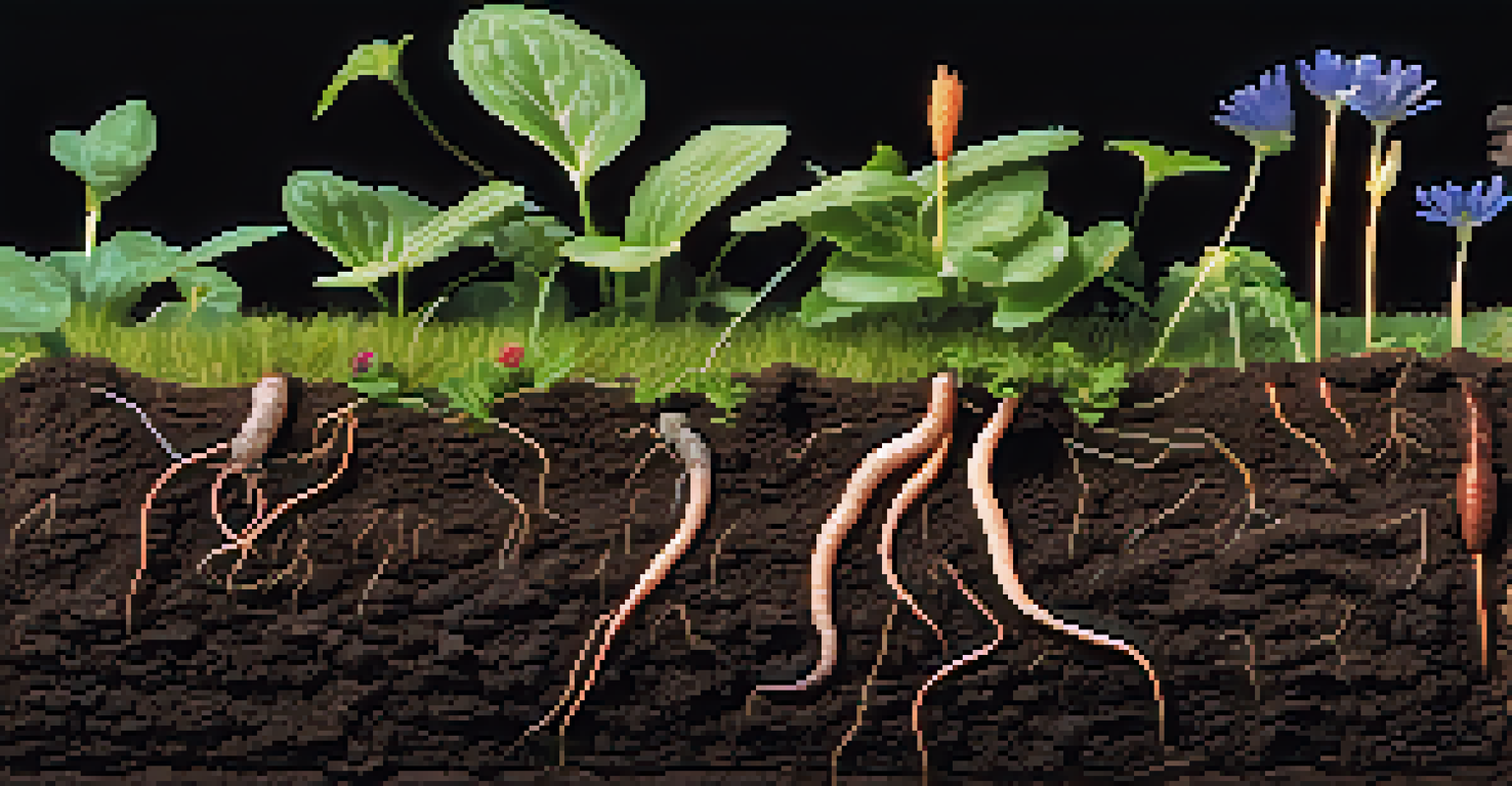How to Plan a Landscape That Thrives in Your Climate

Understanding Your Local Climate and Its Impact
Before diving into your landscape plans, it’s essential to understand the specifics of your local climate. This includes factors such as temperature ranges, rainfall patterns, and seasonal changes. For instance, a region that experiences heavy rainfall will require different drainage solutions compared to a dry area.
The best time to plant a tree was twenty years ago. The second best time is now.
You can gather this information through local weather reports, gardening centers, and even talking to your neighbors who have successfully managed their gardens. By grasping how climate affects plant growth, you can make informed decisions about what will thrive in your yard.
Consider creating a simple chart of your climate characteristics. This visual aid will help you identify which plants and landscape features will not only survive but flourish in your unique environment.
Choosing the Right Plants for Your Climate Zone
Once you know your climate, the next step is choosing the right plants. Plants are categorized into hardiness zones, which indicate their ability to survive in specific temperature ranges. Knowing your zone helps you select plants that will thrive rather than struggle.

For example, if you live in a zone that experiences harsh winters, opting for native perennials that are hardy in those conditions is wise. These plants are naturally adapted to local weather and often require less maintenance and resources.
Know Your Local Climate
Understanding your local climate is crucial for selecting plants that will thrive in your landscape.
Consider visiting local nurseries or botanical gardens to see what thrives in your area. This hands-on approach can inspire your landscape choices and ensure you select plants that will flourish.
Incorporating Native Plants for Sustainability
Using native plants in your landscape design is a sustainable choice that benefits the environment. Native plants are adapted to the local climate and soil conditions, making them more resilient and less prone to pests. They also provide habitat and food for local wildlife, supporting biodiversity.
Nature does not hurry, yet everything is accomplished.
For example, if you live near a wetland area, planting native grasses and wildflowers can help preserve the ecosystem while adding beauty to your landscape. These plants require less water than non-native species, which is a significant advantage during dry spells.
By incorporating native plants, you not only create a thriving landscape but also contribute to the health of your local ecosystem. It’s a win-win for both you and the environment.
Designing with Sun and Shade in Mind
Understanding how sunlight and shade play into your landscape is crucial for plant health. Different plants have varying light requirements, and placing them in the right spot can make all the difference. For instance, sun-loving flowers will struggle in shaded areas, while shade-tolerant plants will wilt in direct sunlight.
Take note of how sunlight moves across your yard throughout the day. This observation will help you determine the best locations for each plant type. Additionally, consider using structures like pergolas or trellises to create shaded areas for plants that prefer less direct sunlight.
Choose Native Plants for Success
Incorporating native plants into your garden enhances sustainability and supports local biodiversity.
By thoughtfully designing your landscape with sun and shade in mind, you’ll create a harmonious environment where every plant can thrive, enhancing the overall beauty of your outdoor space.
Soil Health: The Foundation of Your Landscape
Healthy soil is the backbone of a thriving landscape. Before planting, it’s essential to assess your soil’s texture, pH level, and nutrient content. You can do this through a simple home soil test kit or by sending a sample to a local extension service.
Once you have a better understanding of your soil, you can amend it as needed. Adding organic matter like compost not only improves soil structure but also enhances nutrient availability, creating a fertile foundation for your plants.
Remember, healthy soil leads to healthy plants. Investing time and resources into improving your soil will yield a vibrant landscape that thrives in your climate.
Water Management: Essential for Plant Survival
Water management is vital, especially in areas with irregular rainfall. Implementing effective irrigation systems can help ensure your plants receive the right amount of water. Consider drip irrigation for targeted watering or rain barrels to collect and utilize rainwater sustainably.
It's also important to understand the water needs of different plants. Grouping plants with similar water requirements can simplify your watering routine and reduce waste. For example, drought-resistant plants can be placed together, minimizing their need for frequent watering.
Maintain Your Landscape Regularly
Consistent maintenance is essential for the long-term health and beauty of your landscape.
By prioritizing water management, you can create a landscape that not only thrives despite climate challenges but also conserves this precious resource.
Maintaining Your Landscape for Long-Term Success
Once your landscape is established, maintaining it is key to its long-term success. Regular tasks such as pruning, mulching, and weeding will help keep your plants healthy and vibrant. It’s also beneficial to monitor for pests and diseases early on to prevent larger issues.
Consider setting a seasonal maintenance schedule to stay organized and ensure everything gets the attention it needs. For instance, spring might be the time for planting and fertilizing, while fall can be reserved for cleanup and preparation for winter.

By committing to regular maintenance, you’ll not only preserve the beauty of your landscape but also foster a thriving environment that continues to flourish year after year.